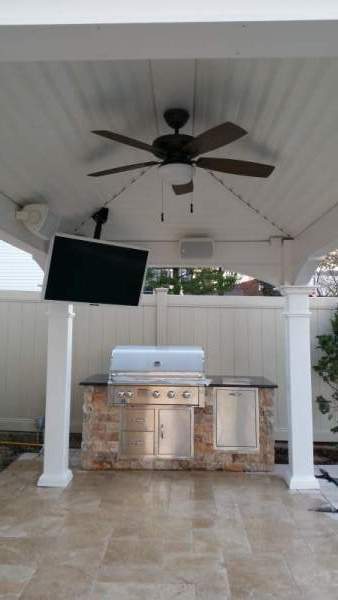
Building A Retaining Wall
Retaining walls may be necessary for properties that are sloped to prevent erosion and runoff or to improve drainage issues. The walls are also sometimes used to add visual interest to a property, even when they serve no practical purpose. Although you may think that building a wall like this is a relatively simple do-it-yourself project, the fact is that there is little room for error when it comes to building a wall that is designed to retain sloping land behind it.
Due to the fact that building a retaining wall can be a bit more complicated than what initially meets the eye, the job is best left to a professional. If you are building a wall that is purely for decorative purposes as part of your overall landscaping, then you may be able to build it yourself, as long as you thoroughly understand what you need to do to make the wall safe and secure. But if you are building the wall to serve its actual purpose – that of holding back or leveling off sloped land, then you are better off having an experienced contractor do the work for you and turn your talents to another DIY project that is on your to-do list.
If you have decided to go ahead and build the wall yourself, the first thing you need to do is to decide on the location and dimensions of the wall and also select the materials. You can choose from a variety of materials, from interlocking blocks and pavers to natural stone and poured concrete. If you are building a wall primarily for decorative purposes, you have more options to choose from and can select a material that blends in nicely with the surrounding landscape. If, on the other hand, the primary purpose of the wall is to hold back sloping land behind it, you may have to carefully select materials that will hold up under the pressure of the soil pressing down on it over time.
Once the initial details have been decided upon, it’s time to start building your retaining wall. The most critical component of getting the build right is to start with a solid foundation. You’ll need to dig a trench that is deep enough to partially bury the first layer of materials and is wider than what you are laying. The key is to dig the trench in such a way so that you ensure that your first layer of blocks, pavers, bricks, etc. are completely level and stable. Be sure to first check for any underground utilities before digging. After the trench is dug, you’ll need to lay a paver base of a few inches (if you are using pavers, stones, etc) to add stability and to make it easier for you to level the first row.
After you have successfully laid out your first row of materials, the rest of the retaining wall should go up a bit easier, but depending on the slope of the land, you may have to do additional work to keep the wall sturdy, secure and level. If in doubt at any point during the building process, it’s best to refer to a professional.
If you are interested in having a retaining wall built in NJ or Staten Island, contact Millenium Stoneworks at 732-519-1112 or 347-723-6990.

